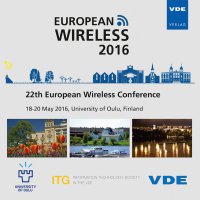Visible Light Communication Constraints in Practical Indoor Lighting Systems
Conference: European Wireless 2016 - 22th European Wireless Conference
05/18/2016 - 05/20/2016 at Oulu, Finnland
Proceedings: European Wireless 2016
Pages: 5Language: englishTyp: PDF
Personal VDE Members are entitled to a 10% discount on this title
Authors:
Ramirez-Aguilera, A. M.; Luna-Rivera, J. M. (Facultad de Ciencias, UASLP, Av. Salvador Nava s/n, Zona Universitaria, San Luis Potosi, S.L.P., CP 78290, Mexico)
Perez-Jimenez, R.; Rabadan-Borges, J.; Guerra, V.; Suarez-Rodriguez, C. (IDeTIC, ULPGC, Las Palmas de Gran Canaria, 35017, Spain)
Abstract:
So far, most of the research activity on visible light communications (VLC) technology has been focused on the communication problem, paying very little attention to the layout design and implementation conditions of practical illumination systems. Therefore, in this paper, we propose to evaluate and analyze the VLC channel effects imposed by a realistic indoor LED-based lighting system. A modified Monte Carlo-based ray tracing algorithm is employed to evaluate the VLC channel impulse response for a typical office room as a function of the wavelength, the physical characteristics of the light sources and their layout in the room. A commercial lighting design software is employed to adopt a realistic lighting layout. Results show that the VLC system’s bandwidth is clearly influenced by the spatial distribution of the light sources, but more important, there are some time-synchronization challenges among the emitters that should be addressed before attempting to integrate the VLC technology to the indoor lighting market.


